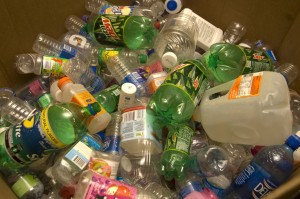Waste Minimization
Truman State has recently engaged in several practices to reduce its waste output. Here are some examples:
- The Sustainability Office launched a reusable utensil checkout program in 2018.
- Furniture, appliances, office organizational items etc. or sent to surplus storage throughout the year. Two or three times a year, we host a surplus sale. Prior to this event, any of these surplus items can be checked out by a campus department for their needs.
- Office supplies can be shared and posted to the Office Supply Exchange.
- Since 2007, course catalogs have been made available online for viewing rather than printing paper booklets. Earlier catalogs are preserved as accessible PDF files.
- Official course schedules are also posted online for viewing rather than being mailed out.
- Directories are automatically updated by the website and are accessible there.
- Students receive a certain dollar amount for printing each semester to help discourage wasteful printing. This dollar amount can be increased with additional payment.
- A printing system put in place in 2017 saves 500,000 sheets of paper annually.
- Residence Halls coordinate free-cycle opportunities during move out days.
Waste Diversio n
n
Truman State has been working on our waste diversion closely with Sodexo, our main food provider. During breaks, perishable food is donated to nursing homes and food depots. All salad production uses pre-consumer composting and we currently compost from all three dining halls and the Student Union Building. It is estimated by the Compost Project that our university composts up to 300 pounds of food waste per operation day. In addition, the PSAC and Truman students assisted the City of Kirksville in getting a grant for a city-wide glass recycling program that is still in use today.
Hazardous Waste Management
Hazardous Waste obviously possesses a larger threat than standard waste, so at Truman State we take this threat seriously and challenge ourselves to create less of it and handle it responsibly. Here are some examples of our precautions:
- The art department no longer uses oil-based paints, and maintenance has cut back on oil-based painting.
- We have greatly reduced our use of non-TCLP fluorescent lamps.
- New purchases of lab materials and chemicals are to be the least hazardous products possible and at the lowest quantity. Additionally, we reuse what lab chemicals we can, while the rest are disposed of responsibly.
- E-Waste is collected from the institution and is either taken to an appropriate disposal site in a nearby city, or sold at surplus sales. We take care to make sure workers are not exposed to harmful materials and that they do not take E-Waste apart.